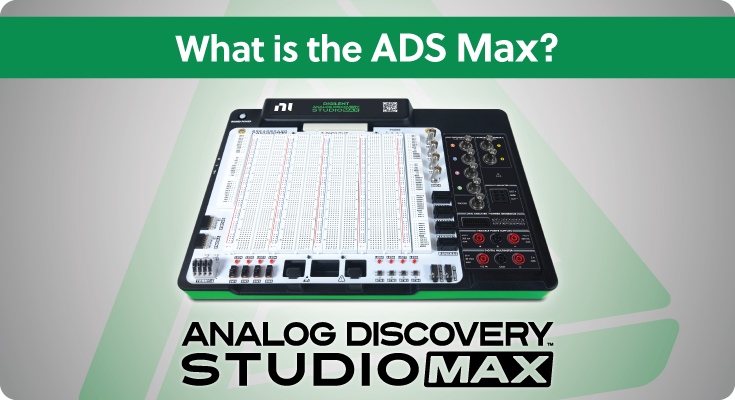Engineering & Learning Via Inspired Students In less than 120 words, when Digilent makes a cheaper version of the ELVIS III, what can you expect? An advanced Analog Discovery Studio …
Featured
Recent Articles
At Digilent, we understand the evolving needs of engineering education. That’s why we’re thrilled to introduce the Analog Discovery Studio Max (ADS Max), a versatile and comprehensive electronics laboratory solution …
Introducing JupyterLab JupyterLab is a relatively new tool. It is an open-source development environment (IDE) for working with Jupyter notebooks. Notebooks are primarily used to combine program code, code results, …
The Problem: A forum member shared their set_gpio() function, which sets a single pin to a specific state (high or low). However, the function had a limitation: it unintentionally cleared …
Using a data acquisition device (DAQ) can be challenging. Often, connecting to a single channel produces a suitable measurement. Yet, DAQs seldom have a single channel; trouble usually happens when …
In a recent forum post, community member Denspa asked a great question: “Can I use two different Analog Discovery units together to increase the number of analog channels available for …
Popular Posts
At Digilent, we understand the evolving needs of engineering education. That’s why we’re thrilled to introduce the Analog Discovery Studio Max (ADS Max), a versatile and comprehensive electronics laboratory solution …
A small post for Digilent’s largest products. All three rebranded NI VirtualBenches are now sold by Digilent and supported by WaveForms on Windows Fastest and highest bandwidth mixed signal …
Let’s talk about clocking. It’s crucial to the functionality of FPGA boards and digital design in general, as all synchronous logic depends on clocks. In this article, we’ll define some …
Shifting Academic Focus In late June, Digilent attended the American Society of Engineering Education (ASEE) Annual Conference. We’re no strangers to the event, and have been proud to show off …
Brandon K. provides a quick rundown on the nuances of notation.
If you’ve been around electronics for a while, you’ve probably noticed that components like resistors, capacitors, zener diodes and inductors come in some odd values. Looking at the chart above, there seems to be no clear rationale behind the values, but there is a pattern. 47kΩ resistors and 22μF capacitors are everywhere, but not 40kΩ or 50kΩ resistors, or 20μF or 30μF capacitors. So what’s the deal? It all has to do with preferred numbers.
Today we will go over a brief overview on FPGAs!
At this point in reading the blog and going through the learn material, you might realize that there is a lot of FPGA code. It doesn’t look like C, it doesn’t look like Java…what is it?



